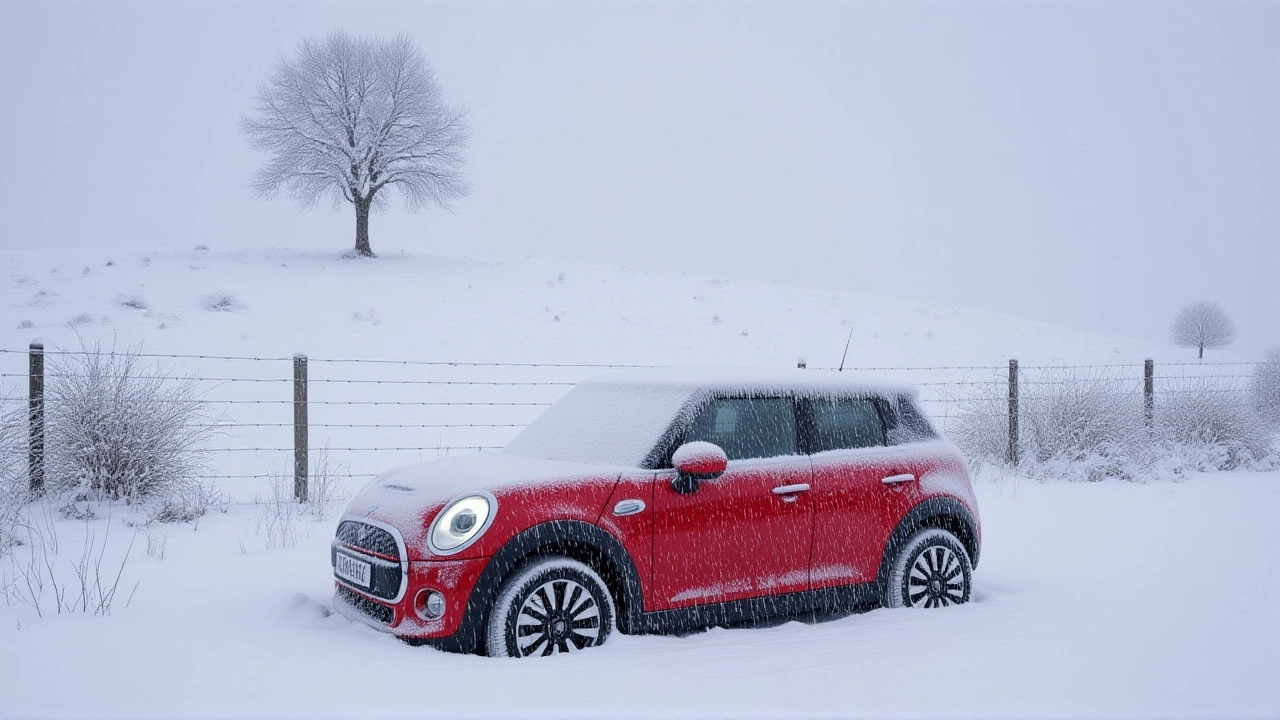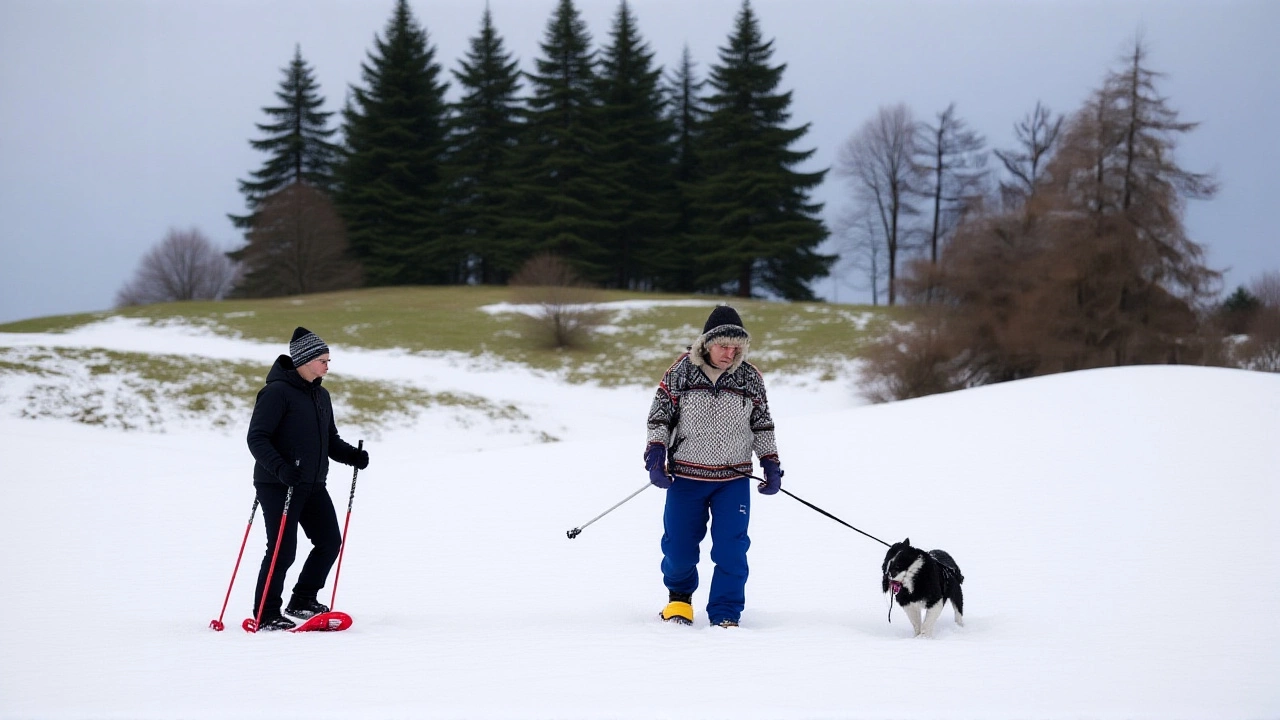The Met Office has issued its most urgent winter alert in years, warning the United Kingdom faces a 10-day Arctic freeze beginning November 19, 2025 — with temperatures plunging to -12°C in parts of Scotland and snowfall expected to paralyze travel across northern and central regions. This isn’t just a cold snap. It’s a full-scale weather reversal after the warmest November on record, including the hottest Bonfire Night ever recorded. Now, the nation is bracing for ice, snow, and the kind of biting chill that turns morning commutes into hazards.
A Sudden Shift in the Weather
Just days ago, Britons were enjoying mild 14°C days and bare trees. Now, the Met Office says a polar air mass is barreling in from the Arctic, dragging temperatures down faster than a dropped phone. The transition began on November 13, 2025, with the agency’s 10-day forecast painting a grim picture: rain turning to sleet, then snow, then relentless frost. By Wednesday, November 19, the coldest air arrives — and it doesn’t leave quickly.
“By Wednesday night, much of Scotland will be in cooler air moving in from the north,” said a Met Office spokesperson. “This will bring below freezing overnight temperatures, as well as the risk of some snow over higher ground.”
What makes this unusual isn’t just the cold — it’s the speed. Marko Korosec, meteorologist and author of severe-weather.eu, noted that at the 850 mbar level — roughly 1,250 meters up — temperatures are swinging from 8°C above normal to 10°C below normal in under a week. That’s a nearly 20°C plunge in days. For context: if you woke up in a T-shirt on Monday and needed a parka by Friday, you’d feel it. Millions will.
Where the Snow Will Hit Hardest
The Met Office has issued an amber warning for Yorkshire — the highest level for snow outside of extreme events. Travel disruption is expected on major routes like the A1 and M62. Yellow warnings cover Wales, southeast England, and southwest Scotland, where heavy rain will turn to sleet and snow by Tuesday, November 18.
By Thursday, November 20, snow is expected to accumulate at elevations above 100 meters inland — with 20 to 25 centimeters possible above 300 meters. That’s enough to bury parked cars, block rural roads, and delay school buses. Coastal areas may dodge the worst, but even they’ll face icy pavements and freezing rain.
Friday, November 21, is forecast to be the coldest morning of the decade so far. Frost will blanket fields and rooftops. In places like the Cairngorms and the Pennines, temperatures could dip to -11°C or -12°C before sunrise. “It’s not just cold,” said one farmer in Dumfries. “It’s the kind of cold that makes your breath stick in your throat.”

Who’s Affected — And How
The impact isn’t just about snowdrifts. It’s about people.
Public transport operators are preparing for delays. Rail companies have already begun deploying de-icing trains. Schools in northern counties are drafting contingency plans — some may close for the first time since 2021. Hospitals are warning of increased admissions from falls on ice and hypothermia, especially among the elderly.
And then there’s the energy strain. With temperatures falling below freezing for over a week, gas demand is expected to spike. National Grid has issued a “weather-related demand alert” for November 20–24. Households relying on electric heating may see bills jump 30% or more.
“We’ve had mild autumns before,” said Dr. Eleanor Finch, climate analyst at the University of Exeter. “But this is the first time since 2010 that we’ve gone from record warmth to record cold in under two weeks. It’s a climate signal — volatile, unpredictable, and dangerous.”
What Comes Next?
The cold won’t vanish after Friday. The Met Office warns the Arctic air will dig in through the weekend. By Sunday, November 23, snow showers could reach northern England and Northern Ireland. By Tuesday, November 25, even parts of the Midlands and North Wales might see snowfall — and not just on hills.
Models suggest a 20% or higher chance of over 1 centimeter of snow falling as far south as Birmingham and Nottingham. That’s not much — but enough to cause chaos on roads not designed for winter.
“There’s still uncertainty,” admitted the Met Office in its November 20 update. “But the trend is clear: prepare for a prolonged spell of winter weather.”

Why This Matters
This isn’t just another cold snap. It’s a stark reminder that climate change doesn’t mean warmer winters everywhere — it means more extreme swings. The UK saw its warmest November on record just days ago. Now, it’s facing its coldest in years. That volatility is becoming the new normal.
Communities in rural Scotland, where snowfall is common, have systems in place. But urban centers like Leeds, Manchester, and even London — where snow rarely sticks — are less prepared. Roads aren’t gritted as often. Public awareness is low. And with energy prices still high, many can’t afford to heat homes properly.
“We’re not ready,” said a council worker in Sheffield who asked to remain anonymous. “Last time we had this much snow, we had a national emergency. We’re not there yet — but we’re getting close.”
Frequently Asked Questions
How low will temperatures go during this Arctic blast?
Temperatures are expected to drop as low as -12°C in elevated areas of northern Scotland, particularly on Friday, November 21, 2025. In lowland regions across England and Wales, overnight lows will range between -3°C and -5°C. Daytime highs will struggle to reach 5°C even with sunshine, due to the weak November sun. Frost is widespread, and ice will form on roads, bridges, and pavements where rain meets frozen surfaces.
Which areas are under the most severe weather warnings?
An amber snow warning is in effect for Yorkshire, indicating high risk of travel disruption. Yellow warnings cover Wales, southeast England, and southwest Scotland. Snow accumulation of 20–25 cm is possible above 300 meters, particularly in the Pennines and Scottish Highlands. Coastal areas will see more rain than snow, but ice remains a major hazard.
Is this cold spell connected to climate change?
While individual weather events can’t be directly blamed on climate change, scientists confirm that a warming Arctic weakens the polar jet stream, leading to more extreme swings — like sudden cold blasts after prolonged warmth. The UK’s record-breaking warm November followed by this deep freeze fits a pattern seen increasingly since 2015. Experts warn such volatility will become more common, not less.
How long will the snow and cold last?
The coldest period runs from November 19–21, 2025, but the Arctic air mass is expected to linger until at least November 25. Snow showers may spread to northern England, North Wales, and Northern Ireland by then. While the worst should ease by late next week, temperatures will remain below average through the end of November. A second cold pulse is possible if northerly winds return after a brief thaw.
What should people do to stay safe?
Stay informed via the Met Office app and local alerts. Avoid unnecessary travel, especially on elevated roads. If you must drive, carry a winter emergency kit: blankets, food, water, a shovel, and sand for traction. Check on elderly neighbors. Keep homes heated to at least 18°C, and avoid using unvented heaters. Frostbite and hypothermia risks are real — don’t underestimate the cold.
Will schools and businesses close?
Many schools in northern and rural areas are preparing to close, especially where snowfall exceeds 10 cm. Local councils will announce closures by 6 a.m. on November 20. Businesses are encouraged to allow remote work where possible. Public transport operators are reducing services on affected routes. Check your local authority’s website for updates — don’t assume closures are national.
